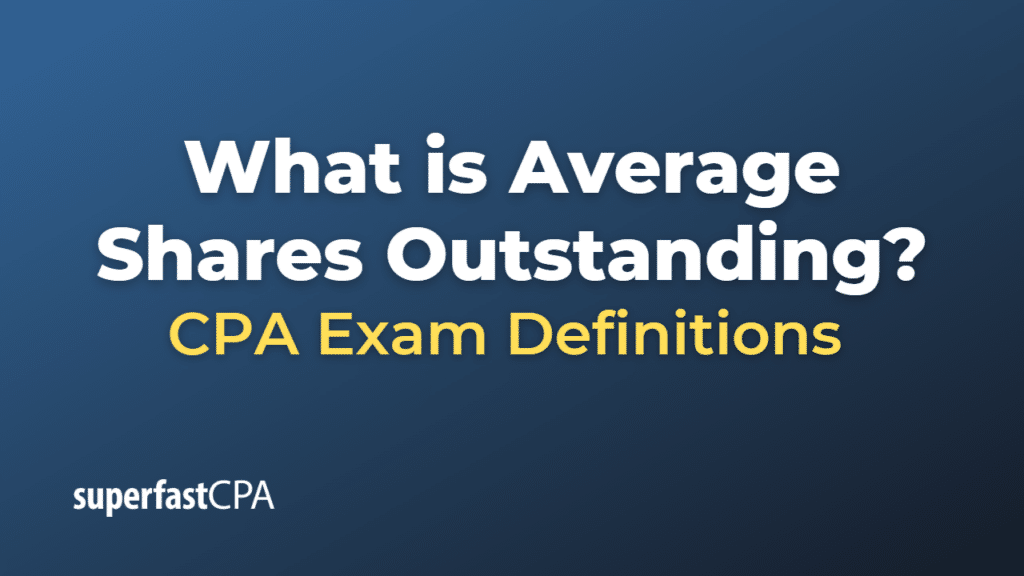Average Shares Outstanding
Average shares outstanding is a financial metric used to calculate the number of shares of a company’s stock that were actively traded or held by investors during a given period. This metric is typically used when calculating financial ratios, such as earnings per share (EPS) or price-to-earnings (P/E) ratio, to provide a more accurate representation of a company’s financial performance over time.
To calculate the average shares outstanding, you need to take the sum of the number of shares outstanding at the beginning of the period and the number of shares outstanding at the end of the period, and then divide by two.
\(\text{Average Shares Outstanding} = \frac{\text{Beginning Shares Outstanding + Ending Shares Outstanding}}{2} \)
It’s important to note that average shares outstanding can be affected by various corporate actions, such as stock splits, stock dividends, and new stock issuances. These events should be taken into account when calculating the average shares outstanding for a given period.
Example of Average Shares Outstanding
Let’s take an example of a hypothetical company named ABC Corp.
At the beginning of the year, ABC Corp. has 1,000,000 shares outstanding. During the year, the company issues an additional 200,000 shares. By the end of the year, the total shares outstanding are 1,200,000.
To calculate the average shares outstanding for the year, you would use the following formula:
\(\text{Average Shares Outstanding} = \frac{\text{Beginning Shares Outstanding + Ending Shares Outstanding}}{2} \)
In this case:
\(\text{Average Shares Outstanding} = \frac{1,000,000 + 1,200,000}{2} \)
\(\text{Average Shares Outstanding} = \frac{2,200,000}{2} \)
\(\text{Average Shares Outstanding} = 1,100,000 \)
So, the average shares outstanding for ABC Corp. during the year were 1,100,000 shares. This figure can now be used to calculate financial ratios, such as earnings per share or price-to-earnings ratio, to provide a more accurate representation of the company’s financial performance during that year.












